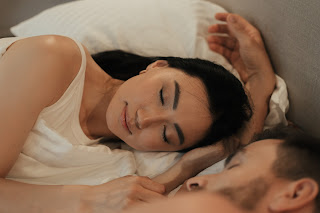Unconventional Techniques for Falling Asleep in Seconds
Falling asleep can be a difficult task for many people, especially those who suffer from insomnia or other sleep disorders. However, there are some weird and unconventional techniques that can help you fall asleep in seconds.
One technique that is gaining popularity is called the "4-7-8" breathing method. This technique involves breathing in for a count of four, holding your breath for a count of seven, and then exhaling for a count of eight. This method is said to slow down your heart rate and relax your body, making it easier to fall asleep.
Another technique that may help you fall asleep quickly is the "Military Method." This method involves relaxing your entire body, starting with your face and working your way down to your toes. You should focus on tensing and then relaxing each muscle group, and you can even say "relax" to yourself as you release the tension.
The "Think of a peaceful place" technique is another effective way of falling asleep quickly. This method involves visualizing a peaceful place, such as a beach or a forest, and focusing on the sights, sounds, and sensations associated with that place. This can help to relax your mind and body, making it easier to fall asleep.
The "Progressive muscle relaxation" technique is similar to the military method but focuses on different muscle groups. You slowly tense and release each muscle group from head to toe, this can help to release tension in the body, making it easier to fall asleep.
Lastly, the "Yoga Nidra" technique is a sleep-inducing yoga practice that involves lying down in a comfortable position and listening to a guided meditation. This meditation is designed to help you relax your body and mind, making it easier to fall asleep.
While these techniques may seem strange or unconventional, they can be effective in helping you fall asleep quickly. It's always best to consult with a healthcare professional before trying any new technique, especially if you have any underlying health conditions.





Comments
Post a Comment